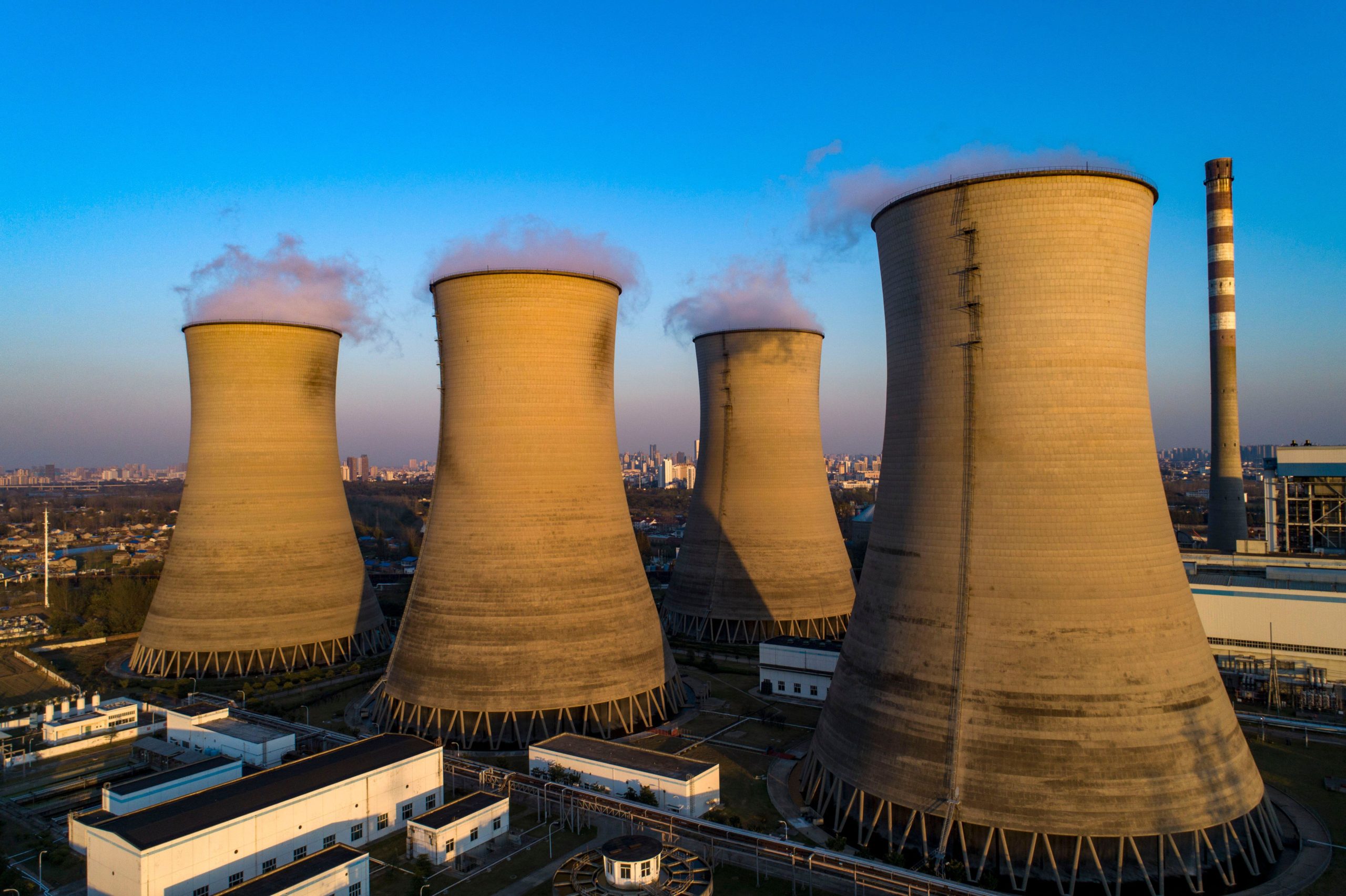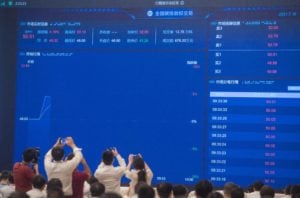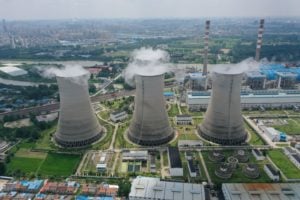New rules on the environmental disclosures to be made by businesses in China, released late last year by the Ministry of Ecology and Environment, came into effect on 8 February.
The rules are an update to regulations put in place in 2015, and implement proposals for reforms to the disclosure system published in May last year. Those proposed reforms included a roadmap for mandatory disclosures of environmental information over the coming five years, with a “basic mandatory disclosure system to be in place by 2025”.
The proposed reforms and the new rules unify a somewhat scattered and lax disclosure system, and focus on resolving the main obstacles to corporate disclosures. Businesses will now have much clearer and more practical guidance to follow.
Two decades of environmental disclosure in China
A company makes an environmental disclosure when it publicly shares the environmental impacts of its production and operations. Companies make them for a range of reasons: most commonly because of regulatory requirements and public demand, but sometimes also out of a sense of social responsibility. Disclosures allow public oversight and can help companies be environmentally responsible. They are an important way for governments to promote modern environmental governance, and are key to achieving peak carbon and carbon neutrality.
Most of China’s regulations on disclosing environmental information are set by the Ministry of Ecology and Environment (MEE), by the China Securities Regulatory Commission (CSRC), or by stock exchanges, with a mix of mandatory and voluntary disclosures. The ministry had previously put disclosure requirements in place for local governments, certain companies (including listed companies) and non-governmental public institutions. For the latter two groups, the focus was on major polluters. The CSRC and stock exchanges focus on listed companies. And they often require disclosures in environmental, social and governance (ESG) reports, corporate social responsibility (CSR) reports, or sustainability reports. Major polluters are covered by all three – the ministry, the CSRC and the stock exchanges.
There are other, external factors driving disclosures too. Rising calls for more ESG-friendly investment has seen new demands internationally for financial institutions to make sustainability disclosures. Those demands have filtered down the investment value chain, pushing Chinese financial institutions and companies receiving investment to make disclosures. Also, some NGOs have come up with disclosure standards and frameworks which are more detailed and better aligned with international practices. These have been widely recognised and adopted by countries, regions and companies, and have positively contributed to environmental and sustainability disclosure practices. Key examples include the Global Reporting Initiative (GRI), the Task Force on Climate-related Financial Disclosures (TCFD), the Climate Disclosure Standards Board (CDSB), the CDP (formerly known as the Carbon Disclosure Project) and the Value Reporting Foundation (VRF). However, the government is still the most important player in promoting disclosure of environmental information in China.
With China pursuing an ecological civilisation and making steady progress towards creating a “modern environmental governance system”, there has been more demand for improvements to environmental disclosures. In 2017, at the 19th National Congress, China’s president, Xi Jinping, called for a comprehensive and mandatory system for disclosing environmental information. Arrangements for that followed in documents on structural reforms for building an ecological civilisation, establishing a green finance system, and creating a modern environmental governance system.
China has been legislating for environmental disclosures for nearly 20 years. The State Environmental Protection Agency (the forerunner of the Ministry of Ecology and Environment) issued a notice in 2003 which could be regarded as China’s first regulation on environmental disclosure. In 2008, the agency expanded on that with rules for a trial on environmental disclosures, which were updated in 2015. The agency also issued additional documents on better environmental oversight of listed companies. However, the differing subjects of these rules, and a lack of clarity over the forms, processes, timings and channels for disclosures, means environmental disclosure efforts have never advanced systematically.
What’s new?
Comparing the rules with the 2008 and 2015 versions can illuminate the progress made.
First, the new rules apply only to companies, with a focus on firms causing significant environmental impact or public concern.
The 2008 rules covered both government and companies, while the 2015 version applied to companies and non-governmental public institutions. The recent update only applies to companies. Alongside the measures for major polluters in the two earlier editions, the updated rules also cover those heavily polluting companies that are subject to Mandatory Clean Production Audits, and listed or bond-issuing companies which have violated environmental laws during the previous year. Firms in the latter category will now be required to make annual environmental disclosures for the following three years. These firms, having already breached regulations, are considered an obvious risk. Bringing them within the scope of environmental disclosures will help mitigate that.
Second, there are new norms for how and when environmental information should be published, and it is now a requirement to disclose data on environmental management, carbon emissions and breaches of environmental law.
Companies must now make disclosures in line with a recently issued format, and upload that information to a portal run by local environmental authorities, by an annual deadline. This goes a long way towards standardising the process and form of disclosures, and clarifies who is responsible for oversight.
Environmental management information to be disclosed includes the “environmental administrative licences” from the previous editions, and adds info on environmental taxes and environmental credit ratings. This links environmental disclosures with corporate credit ratings, reflecting various aspects of the company’s environmental practices.
Carbon emissions data is another new addition, demonstrating a trend towards disclosing climate information. In October last year, the Party Central Committee and the State Council issued guidance on work to reach peak carbon and carbon neutrality, explicitly proposing to establish a complete system for companies and financial institutions to report and disclose carbon emissions data. Disclosing corporate environmental and climate data is important for encouraging ESG investment and achieving peak carbon and carbon neutrality. It is likely more and more key greenhouse gas emitters will be required to make such disclosures as carbon markets and trading develop.
Also, the new rules require companies to make provisional disclosures of significant market and time-sensitive data, such as breaches of environmental law or compensation payments.
Third, the new rules feature tougher oversight, link up various platforms, and move towards better sharing of disclosed data.
Previously, companies had to make disclosures on their own websites or in local media or press. Even if companies complied, information was scattered and hard to supervise or track. The new rules mean companies will disclose environmental information via a dedicated platform set up by the local environmental authorities, which the public can view free of charge. Both government and the public will be able to exercise oversight. The new rules also call for that system to be linked up with other environmental information platforms, such as that for pollutant discharge permits, and databases such as those for financial credit. That should make oversight of companies’ environmental performance more transparent, effective and joined up. Cross-verification will also become possible, making greenwashing tougher.
Overall, the new rules are still conservative in terms of how widely they can be applied, as there are already various policies in place requiring disclosures from major polluters and companies subject to Mandatory Clean Production Audits. This is still some way from full and mandatory disclosures for listed companies, with little requirement in place for those firms to create long-term strategic environmental management plans. The CSRC and the stock exchanges may tackle this in the future. But the rules suit the environmental management capacities of Chinese firms today. The main advance is in formalising how disclosures are made and bringing oversight and supervision into one, more transparent place. This will provide government and other stakeholders with the tools to track corporate environmental performance and aid decision-making.
Worth noting is that the updated rules allow for the future linking of environmental information across companies and financial institutions. With environmental and climate disclosure systems for financial institutions developing rapidly, there are hopes for corporate financial information to feed into the use of green financial instruments such as green credit, green bonds and carbon-reduction loans. Bringing information from different areas together will help “green” flows of funds on the market and encourage companies to grow greener. In the future, only genuinely green, low-carbon and sustainable firms will be favoured by the markets and able to raise and borrow funds easily.
How should companies respond?
Any listed companies covered by the new rules should, if they have not already done so, prepare to make environmental and climate disclosures, in line with steadily tougher policy and market requirements. Those preparations could be benchmarked against international disclosure frameworks such as TVFD, GRI and CDP, which are practical and forward-looking, and will ensure listed companies can stay ahead of policy requirements. Listed firms already making disclosures should continue improving their environmental performance, ESG policies and environmental and climate governance practices, doing their best to shift to low-carbon and environmentally friendly business models. This will reduce future regulatory risks and create long-term value, boosting overall company value and competitiveness.
As for unlisted firms, the changes will hold no surprises for any company already making environmental disclosures, and will not add significantly to their burden. Key for them will be taking this opportunity to set up effective systems for managing environmental disclosures, including by putting in place proactive, rather than passive, internal controls and data management, and improving environmental performance in all parts of their operations. Firms making disclosures for the first time should start with capacity building, gradually increasing awareness and putting systems and processes in place for managing and disclosing environmental information.
Companies still not covered by the new rules have some breathing room, but should bear in mind that such disclosures are becoming the norm. Preparations made now will save panic later. With work to cut emissions, save power and reach peak carbon and carbon neutrality underway, and mandatory disclosure policies on the horizon, companies should ensure they are ready.
Suggestions for improving environmental disclosure systems
The proposals for reforms to the disclosure system published in May last year, and the new rules which incorporate them, indicate work in this field is being fast-tracked. Stricter and wider-reaching disclosures will help realise sustainable development and achieve peak carbon and carbon neutrality as soon as possible. At the CDP, we think the following actions would improve systems for disclosing corporate environmental information.
First, expand mandatory disclosures to gradually cover more firms and industries that pollute, and move towards mandatory disclosures for all listed firms.
Second, the Ministry of Ecology and Environment could work with other regulatory bodies to gradually ramp up environmental disclosure and performance requirements for listed firms. The focus here could be on improving the quality and comparability of information disclosed, and encouraging environmental considerations in mission statements and strategic planning, and the adoption of environmental risk management measures.
Third, far-reaching integration and mutual encouragement between financial institutions and companies should be promoted. Different government bodies should work together to encourage companies towards environmental transparency and provide reliable data for green finance and sustainable investment.
Fourth, encourage industry associations to produce and issue sector-specific disclosure standards, providing evidence for categorised, graded and detailed disclosure indices.
Fifth, participate in the building of international standards. With a full consideration of China’s circumstances and own requirements, compare the leading international disclosure frameworks and adopt suitable approaches, so developing a disclosure system that is both international and localised.









